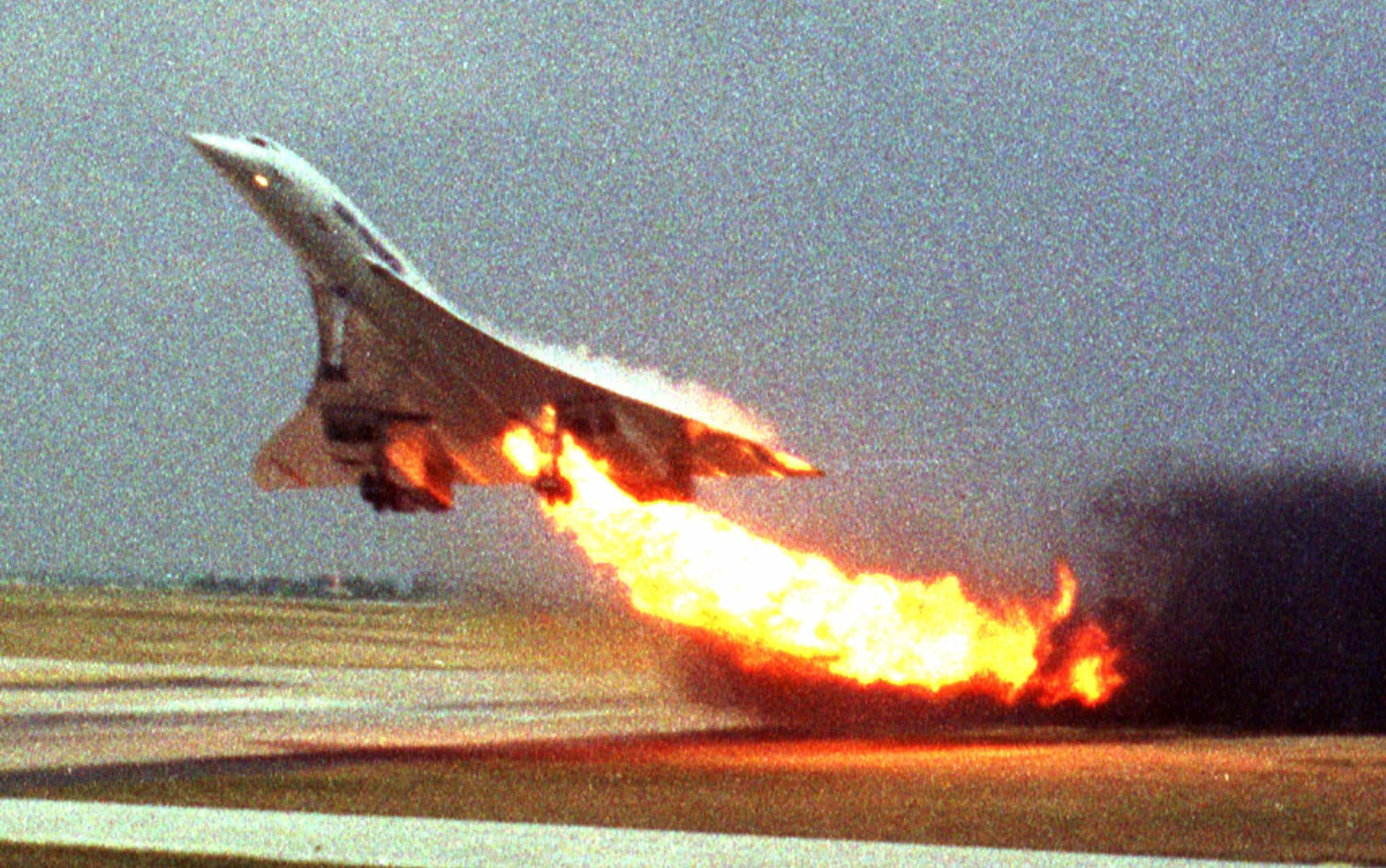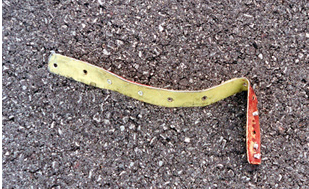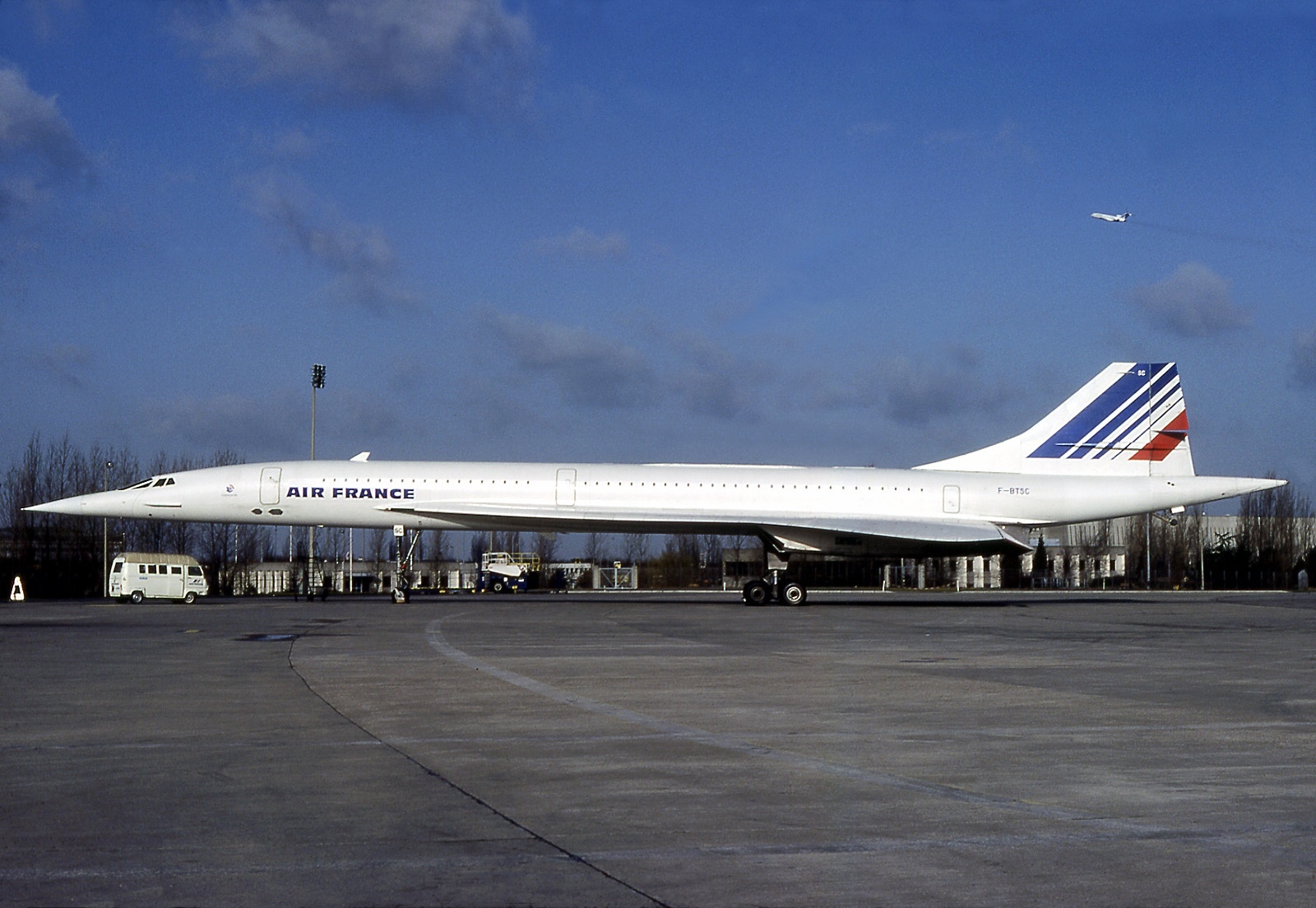

During takeoff from runway 26 right at Roissy Charles de Gaulle Airport, shortly before rotation, the front right tyre of the left landing gear was damaged and pieces of the tyre were thrown against the aircraft structure. A major fire broke out under the left wing. Problems appeared shortly afterwards on engine N° 2 and for a brief period on engine N° 1. The aircraft was neither able to climb nor accelerate. The crew found that the landing gear would not retract. The aircraft maintained a speed of 200 kt and a radio altitude of 200 feet for about one minute. Engine n° 1 then stopped. The aircraft crashed onto a hotel at La Patte d¹Oie in Gonesse.
—English translation, Summary, Preliminary Accident Report, Bureau Enquêtes-Accidents
The final report stated:
3.2 Probable Causes
The accident was due to the following causes:
• High-speed passage of a tyre over a part lost by an aircraft that had taken off five
minutes earlier and the destruction of the tyre.
• The ripping out of a large piece of tank in a complex process of transmission of the
energy produced by the impact of a piece of tyre at another point on the tank, this
transmission associating deformation of the tank skin and the movement of the
fuel, with perhaps the contributory effect of other more minor shocks and /or a
hydrodynamic pressure surge.
• Ignition of the leaking fuel by an electric arc in the landing gear bay or through
contact with the hot parts of the engine with forward propagation of the flame
causing a very large fire under the aircraft’s wing and severe loss of thrust on
engine 2 then engine 1.
In addition, the impossibility of retracting the landing gear probably contributed to the
retention and stabilisation of the flame throughout the flight.
— Accident on 25 July 2000 at La Patte d’Oie in Gonesse (95) to the Concorde Registered F-BTSC operated by Air France, Bureau Enquêtes-Accidents, Report Translation f-sc000725a, at Page 176

All 109 persons aboard the airliner and another 4 person on the ground were killed. 1 person was injured.
Accident investigators concluded that the Concorde had run over a metal strip on the runway which had fallen off of a Continental Airlines McDonnell Douglas DC-10, N13067, which had taken off from that runway a few minutes previously. The strip damaged the Concorde’s tire and caused it to fail.
Because the Concorde was vulnerable to a catastrophic accident resulting from such a minor issue as a failed tire, the fleet’s airworthiness certifications were suspended.

F-BTSC had first flown 31 January 1975. At the time of the accident, it had flown 11,989 hours and 4873 cycles.


Production Concordes were certified for a maximum operating cruise speed of Mach 2.04, and a maximum operating altitude of 60,000 feet (18.288 meters). The maximum range 3,900 was nautical miles (4,488 statute miles/7,223 kilometers).
© 2020, Bryan R. Swopes